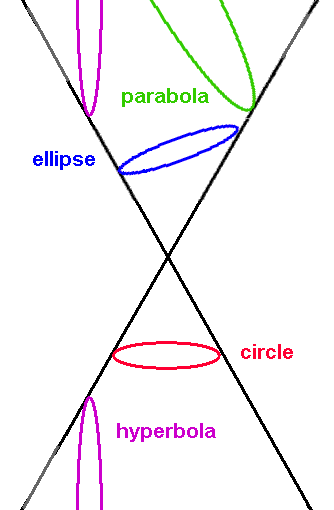Conic section
From Conservapedia
A conic section is the two dimensional curve that is the intersection of a plane with a right circular cone. In mathematics, a cone extends to infinity, and goes in both directions from its apex.
Depending on the orientation of the plane relative to the cone, the conic section produced will be:
- A circle, if the plane is perpendicular to the cone's axis
- An ellipse, if the plane intersects the axis at an angle greater than the angle of the cone's apex.
- A parabola, if the plane is parallel to the side of the cone (so it only intersects one half of the cone)
- A hyperbola, if the plane is at an angle to the axis smaller than the cone's apex. Most hyperbolas are thus two separate curves, resulting from the plane intersecting both "halves" of the cone.
Degenerate conics
- If the plane is tangent to the cone, a line is produced
- If the plane intersects the apex of the cone only, the result is a point.
